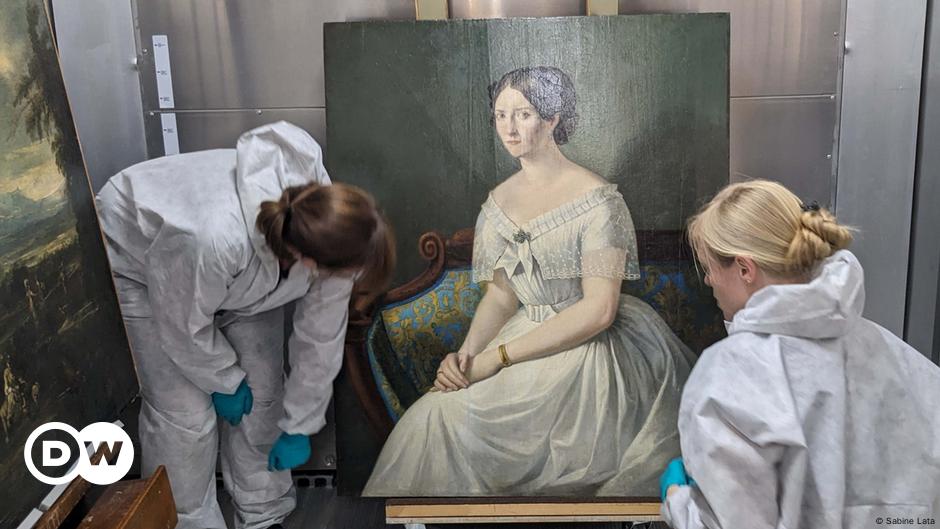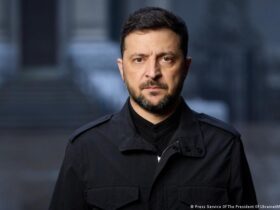When Russia launched a full-scale invasion of Ukraine in February 2022, Odessa soon became one of the invader’s targets.
In July 2023, an enemy rocket struck the Museum of Western and Eastern Art in the historic center of the southern Ukrainian port city, damaging the spectacular, blue-washed museum.
Fortunately, museum director Igor Poronik had already archived all the paintings before the attack, and shipped the most important works to Lviv in western Ukraine.
Those efforts also began a remarkable German-Ukrainian cultural project, as it soon became clear that the paintings in their emergency storage were not in good hands. Thousands of artefacts were stored in the overcrowded depot.
“Much later I saw the conditions under which they were stored,” museum director Poroniek told German public broadcaster Rundfunk Berlin-Brandenburg. “The conditions were not optimal.”
A German initiative to save the works
An idea that would allow the works to be better preserved came from Ralf Gleiss, director of the Alte Nationalgalerie in Berlin, who suggested displaying the works in the German capital.
In September 2023, Igor Poronik sent the paintings by truck to Berlin. An exhibition project was launched together with Dagmar Hirschfelder, director of the Berlin Gemäldegalerie, which received the support of the Federal Commissioner for Culture and Media, Claudia Roth.
“It is very important for me to help my Ukrainian colleagues,” the director of the Gemäldegallery told RBB. Hirschfelder calls the project an “important gesture of solidarity” with Ukraine.
“Cultural property, Ukrainian cultural property is being actively destroyed and destroyed. And it is very important for us to make a contribution here,” said the director of the Gemäldegallery.
Following a small initial presentation last spring, a major special exhibition, “From Odessa to Berlin,” will run from January 24 to June 22.
In addition to Culture Commissioner Roth, Federal President Frank-Walter Steinmeier will also be among the guests at the opening evening.
These are important works of European art from the 16th to the 19th centuries, which underline the European character of the museum in Odessa.
The museum, which may be in Milan, Berlin or Amsterdam, has one of the finest collections of foreign art in Ukraine.
It contains the early Baroque painting “Ecce Homo”. Bernardo StrozziIt depicts the flogged Jesus being presented before Pontius Pilate.
Other highlights of the collection include “The Virgin Enthroned with Blessing Child, St. John and the Archangel Michael” by Michelangelo’s contemporary and friend Francesco Granacci (1469-1543).
A work by Roelant Savery (1576-1639) shows how the artist created a magnificent paradise landscape with the finest brushstrokes. Only upon close inspection can Adam and Eve be seen under the Tree of Knowledge in the background.
Finally, the Italian painter Johann Baptist von Lampi the Elder captured an intimate moment in a painting: his wife breastfeeding.
Art persists beyond authoritarian rule
The special exhibition combines different genres and styles, showcasing the Berlin Gemäldegalerie’s own collection. This also shows the connection between Ukraine and Western Europe.
“It gives us hope when people come to the museum and see that paper and canvas have lasted so many years and experienced so much,” says Igor Poronik, director of the Odessa Museum. “Evil is fleeting, but art lasts forever!”
After the Berlin show, the special exhibition will travel to Europe before one day – when the war ends – returning to Odessa.
This article was originally written in German.






Leave a Reply